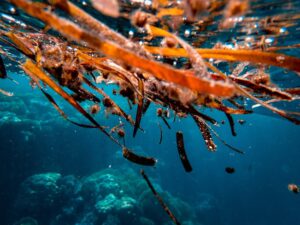Around 10 kilometres off the coast of Freo lies a secluded island teeming with wildlife. (No, it’s not Rotto and you won’t want a selfie with these creatures.)
The 19-hectare island has calm waters for snorkelling and is a rest area for Australian sea lions.
The catch? You need to share it with hundreds of the world’s deadliest snake species.
SNAKE-INFESTED
Carnac Island is teeming with tiger snakes – an estimated 20 adult snakes per hectare with a total population of up to 400.
Unlike nearby Garden Island’s naturalised tiger snake population, Carnac Island was snake-free until the 1930s.
Letters published in The West Australian newspaper in the 1800s complain about the snakes on Garden Island and praise Carnac Island for its absence of snakes.
From 1836 to 1916, Carnac Island hosted a whaling station, a prison and a quarantine station, with no snake bites or injuries reported.
So, what happened in 1930 that transformed Carnac Island from snake-free utopia to snake haven?
The answer may lie with a travelling snake showman.
THE SNAKE SHOWMAN
Lindsay Harold Hane, known by his stage name Rocky Vane, was a snake charmer and performer in Fremantle.
With help from his assistants, he would demonstrate tricks with the snakes in front of stunned audiences.
This didn’t always go to plan. In 1928, Vane’s wife and assistant Dorothy was bitten by one of his snakes and died. A year later, his replacement assistant, Harry Melrose, also died from a snake bite.
After their deaths, a magistrate ordered Vane to dispose of the snakes.
This wasn’t ideal for Rocky. He would lose his source of income and his snake collection, which had been cultivated for his performances. His tiger snakes were larger than normal size and more passive than usual.
If Vane released his snake collection on the mainland, they would likely never be recovered.
So, did he release them on Carnac Island with the intention of recapturing them later?
In 1931, The Western Australian Times published an article that Vane had disposed of his snakes – but not for long. By 1933, he was putting on snake shows again.
So, did he dump them on Carnac Island in 1930, retrieve a few of them before 1933 and the snakes that remained have thrived? That’s one theory.
SURVIVAL OF THE FITTEST
Dr Fabien Aubret, a researcher in ecology and evolutionary biology at Charles Sturt University, says the theory is “common sense”.
“Their behaviour, their morphology – it’s pretty convincing,” says Fabien, “especially compared to other snakes in the area. They were especially larger.”
He says there are other theories about the snakes’ origin, and DNA testing is under way to pinpoint it.
Another possibility is that a small snake population has existed on the island for over 1000 years, which later combined with an introduced population.
Wherever they came from, scientists have discovered they differ significantly from mainland tiger snakes.
SIZE MATTERSSS
The Carnac Island tiger snakes are 20–30% larger. With a mainland tiger snake measuring about 1 metre long, that adds another 20–30 centimetres. Yikes!
Their behaviour is more placid than in other studies of tiger snakes, which tend to be more defensive.
Is this evolution from thousands of years of isolation from human activity? Or is it the result of Rocky Vane’s snakes that were larger and calmer? It’s hard to say.
The snakes have also adapted to the size of the prey available to them on the island.
A HEAD START
Tiger snakes on Carnac Island mainly eat whole seagull chicks. As a result of eating larger prey, they have developed a bigger bite and longer jaw bones.
Don’t think the seagulls have taken this lying down. Yet another unique characteristic of Carnac Island tiger snakes is that 5% of them are blind.
Yep, seagulls have pecked their eyes out while defending their nests and chicks.
While they might have to deal with a stray peck from a seagull, between the lack of predators and the ample opportunity to feed and reproduce, the snakes of Carnac Island are living a relaxing lifestyle.
Unlike these Perth tiger snakes that are resorting to inbreeding.
So, while their origin may still be a mystery, they don’t seem to be going anywhere any time soon.










